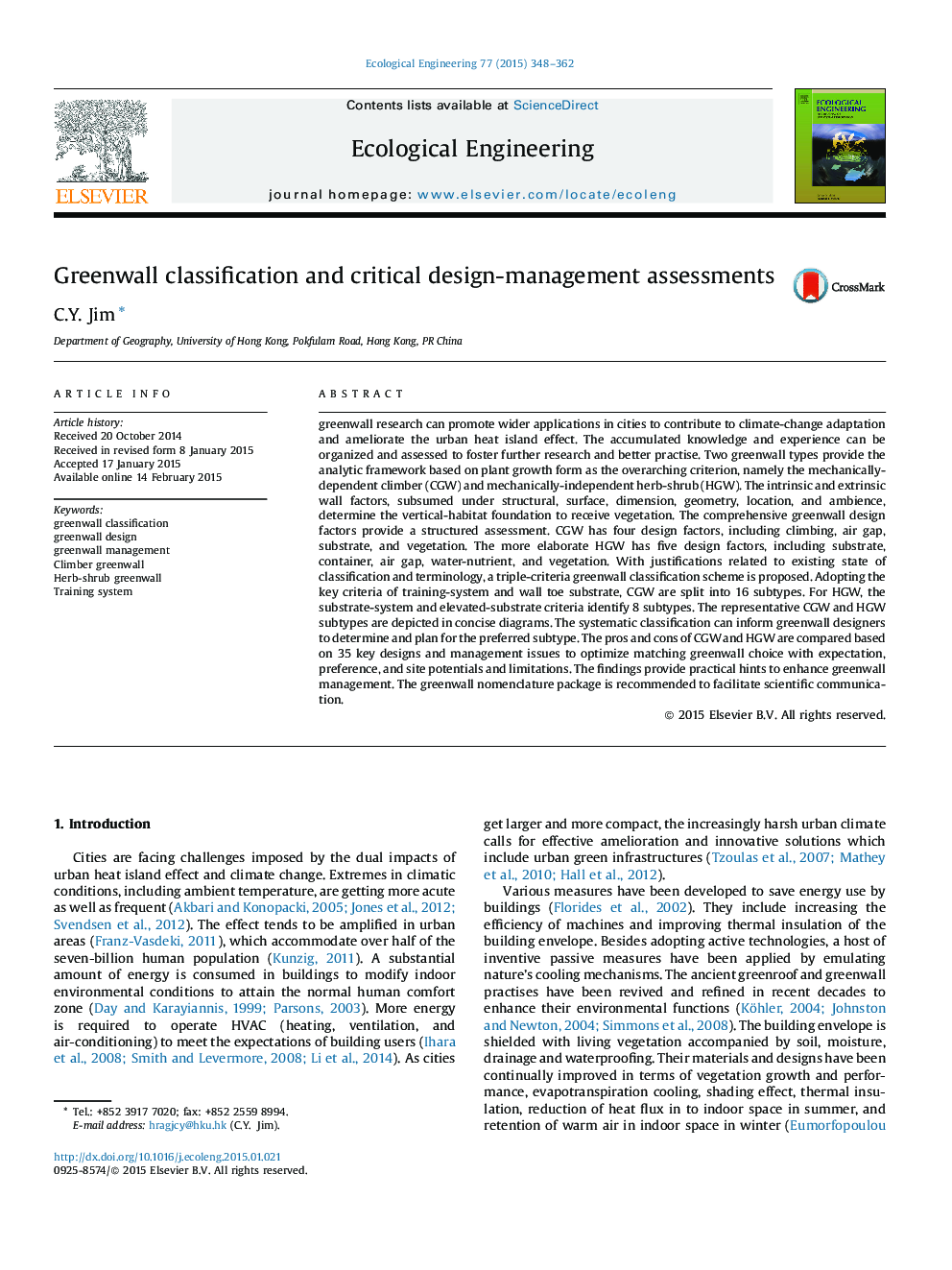| Article ID | Journal | Published Year | Pages | File Type |
|---|---|---|---|---|
| 4389280 | Ecological Engineering | 2015 | 15 Pages |
•Intrinsic and extrinsic traits of various walls as vegetation recipients are reviewed.•Two main strands of greenwalls, the climber and the herb-shrub types, are identified.•Multiple criteria for design and management of greenwall types are assessed in detail.•A dual-criteria greenwall classification scheme is proposed to enhance understanding.•Pros and cons of two greenwall types are compared to improve design and management.
greenwall research can promote wider applications in cities to contribute to climate-change adaptation and ameliorate the urban heat island effect. The accumulated knowledge and experience can be organized and assessed to foster further research and better practise. Two greenwall types provide the analytic framework based on plant growth form as the overarching criterion, namely the mechanically-dependent climber (CGW) and mechanically-independent herb-shrub (HGW). The intrinsic and extrinsic wall factors, subsumed under structural, surface, dimension, geometry, location, and ambience, determine the vertical-habitat foundation to receive vegetation. The comprehensive greenwall design factors provide a structured assessment. CGW has four design factors, including climbing, air gap, substrate, and vegetation. The more elaborate HGW has five design factors, including substrate, container, air gap, water-nutrient, and vegetation. With justifications related to existing state of classification and terminology, a triple-criteria greenwall classification scheme is proposed. Adopting the key criteria of training-system and wall toe substrate, CGW are split into 16 subtypes. For HGW, the substrate-system and elevated-substrate criteria identify 8 subtypes. The representative CGW and HGW subtypes are depicted in concise diagrams. The systematic classification can inform greenwall designers to determine and plan for the preferred subtype. The pros and cons of CGW and HGW are compared based on 35 key designs and management issues to optimize matching greenwall choice with expectation, preference, and site potentials and limitations. The findings provide practical hints to enhance greenwall management. The greenwall nomenclature package is recommended to facilitate scientific communication.
